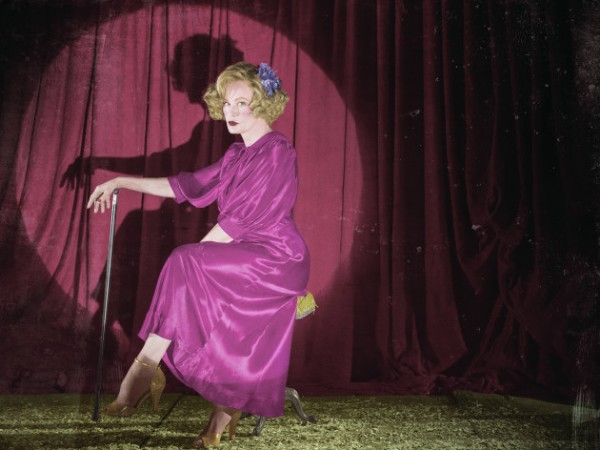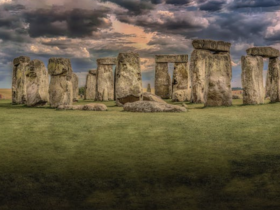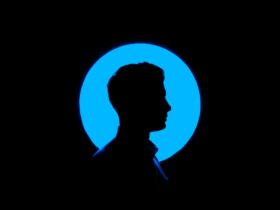Oddity Show, the fourth portion of Ryan Murphy’s corrupted musical drama of camp, awful deeds, and disturbia, is situated in Florida.
You need to love a fellow with a comical inclination.
While implanted with Murphy’s signature, guileful, mindful wit both in origination (the monstrosities are in Florida!) and execution—to the extent that his American Horror Story arrangement have been a reverence to fundamentals, tropes, and platitudes of the exemplary terribleness kind, they deride them with wicked happiness Freak Show is really surprisingly scaled back in silly comedic nibble when contrasted with his last emphasis, Coven.
Actually, Freak Show dials again on everything that was situated to 11: the flavorful one-liners, the audacious view biting, and even the unmistakable panic strategies.
The result is a Freak Show that, aside from its thrown of Ripley’s-prepared characters, is astoundingly un-freaky.
Rather its a more soiled, cranky drama that irritates and, along these lines, delights—by drawing you into the dingy shop of repulsions set up under the carnival tent and leaving you to live uneasy among its unrefined, unattractive, and unhinged characters.
The altogether boo!s and basins of blood that now characterize the arrangement so far have cleared a path, it appears, for a storyline that plans to mine its alarms in a moderate bubbled plot improvement however “story advancement” and “Ryan Murphy” in the same sentence may really be as stunning as an animal bouncing out from under the bunk.
Don’t be befuddled. This is still American Horror Story. It is still out of its damn personality, and blessedly so. There is a psycho comedian serial executioner that will frequent your fantasies until the end of time and a man with fingers that have twisted themselves into flippers that he uses to jerk off ladies for cash and there is Kathy Bates wearing a whiskers.

Anyhow there’s additionally a recognition that perhaps, simply possibly, there’s an ability to read a compass and an end amusement for this story that Murphy will really take as much time as required to achieve, a flight from the kitchen-sink methodology to his past American Horror Story cycles where it was tricky to escape the suspicion that the account was being made up as the journalists came.
Perhaps this is on the grounds that very little happened in the Freak Show debut. Possibly this is on account of our own individual disfigurement is visually impaired, now and again confused confidence in Ryan Murphy. Then again possibly on the grounds that its actual, as it appears that Freak Show really is by all accounts taking a danger by letting story supplant panic and parody this season.
Regardless of the fact that that implies we’re forgetting the gooey camp that the treasury has appeared to flourish with.
Obviously, however, this is titled Freak Show, and likewise there is bounty to wonder about. Boss among them is Sarah Paulson’s double, astounding execution as conjoined twins Bette and Dot Tattler. Set in 1952 in that veritable oddity royal residence that is Florida—times may change, however substances don’t—the account starts when Bette and Dot are ensnared in a homicide. (Of their mother, no less.)
The sisters are a wonder of visual impacts, yet significantly all the more so when Paulson’s acting is considered. The knowledge of viewing her cherubic face distort into two totally diverse characters originating from the same body, responding to the same circumstance, in the same cam edge is worth ogling at, as well as savoring.
An inexorably necessary part of Murphy’s American Horror Story troupe with every progressive season, this is the most out of control, most amazing execution she’s pulled off yet. Actually, exhibitions.
A German expat named Elsa Mars, the proprietor of the main oddity show played by AHS excellent lady Jessica Lange, finds Bette and Dot in the wake of perusing about them in a neighborhood Florida daily paper. She’s been renting field space for her human zoo close-by, and, confronting ousting, she needs a main event.
Ethel “The Bearded Lady” Darling (Kathy Bates), Jimmy “Lobster Boy” Darling (Evan Peters), the world’s littlest lady, Amazon “World’s Tallest Woman” Eve (Erika Ervin), a man who gnaws off the head of living creatures: none of them are making a sufficient showing pressing in the swarms.
The Tattler twins, regardless of their inclination for homicide and an absence of socialization, having been kept recluses by their mother (who they slaughtered), are the show’s best trust.
One of the twins imparts Elsa’s captivation to the entertainment biz, and discovers going along with her showcase of odd to be inebriating, on the off chance that it implies a changing area and a spotlight. The other’s hatred of the entire act may be too on-the-nose in the inverse course: “Dear journal, My spirit plumbs to new profundities of gloom,” she composes after they join Elsa’s thrown.
In any case as with everything Ryan Murphy does, there’s subtext to every characterization, and a lesson to be detracted from each TV show idea even ones that discover Meryl Streep’s girl partaking in an opium-incited bacchanal with unpleasant comedians.
(That happens!) The lesson here, it ought to be self-evident, is that while there are those ready to let their monstrosity banners fly—or at any rate abuse their variations from the norm for benefit there are the individuals who are, by most records, “typical,” whose own internal corruption may justify them procuring “oddity” status above anybody with a physical peculiarity.
There’s the yuck, for instance, of Elsa, an overall dazzling, sure, and aspiring representative and wannabe showbiz star styled to seize all of Jessica Lange’s Hollywood magnificence. There’s the evil and decrepit way she coerces, teasing out the sexual insecurities of those she spooks a monolog addressing how Dot and Bette explore their solitary conceptive framework when one and only gathering wishes to delight themselves, for instance.
Furthermore interestingly there’s Bates’ Ethel Darling, styled with no cosmetics, an unflattering closet, and—I don’t have the foggiest idea about a woman facial hair, however who displays the purest heart of any character on the show, and feels an obligation to Elsa, whose intentions in putting on the oddity show are purely selfish, for providing a home for her, and a family.
At that point, obviously, there’s the individuals who Elsa both yearnings and says she hates: the individuals who come to stare at her minimal, atypical crew. The general population. The judgers. Facing one, played by Grace Gummer, relative of Streep, Lange emits into an exceptionally Murphy-ian monolog:
“I’ll let you know who the creatures are: the individuals outside this tent. Housewives squeezed with astringency, stunned with fatigue as they nap off before clothing cleanser plugs and long for odd, suggestive delights. They have no souls. My beasts, the ones you called corrupted, they are the delightful, chivalrous ones. They offer their peculiarity to the world. They offer a giggle or dismay to those in need of diversion.”
Should there be any equivocalness on this record, Peters’ “Lobster Boy” character straight-up murders a police criminologist who calls them cracks. American Horror Story: Freak Show, it appears, is a vengeance story. This debut has set out the foundation for a war: the underdogs and overlooked will climb. Their monstrosity banners will wave.
Murphy has been managing in “untouchables” his whole vocation. There’s the humorous loners let alone for Popular, the shaky surgery-seekers of Nip/Tuck, the warbling wallflowers of Glee, and, now, the sorts of people we’d put in a zoo. Monstrosity Show, then, by its extremely name ought to be his most noteworthy accomplishment.
It’s scarcely that, failing to offer the forceful unpredictability and encouraged narrating that is made him the pied flautist to a country of TV-viewing weirdos, ridiculed and disregarded.
However there’s an earnestness with which he’s given this first Freak Show trip that really arouses all the more an oddity than running out the normal surge of spooks, one-liners, and brazenness could’ve potentially be carried out right now in the American Horror Story run.
Anyhow the one thing that has been the sign of this treasury arrangement its capriciousness not exactly how the show will change tonally from year to year, at the same time, truly, from scene to scene. Who comprehends what’s prowling around the bend one week from now. Yet we’re cracked enough to figure out.























